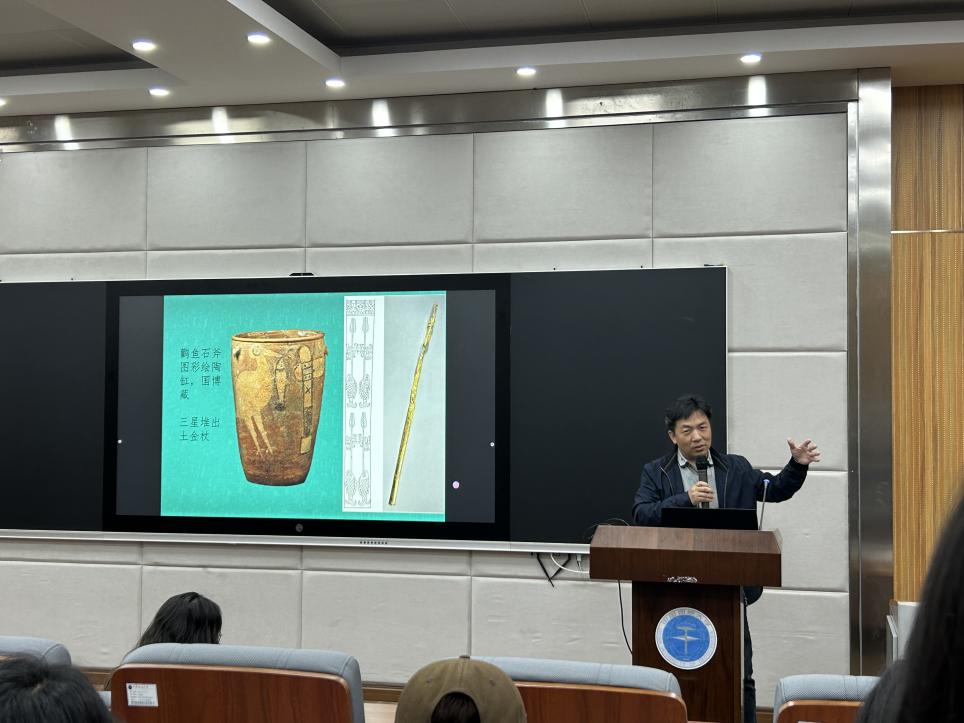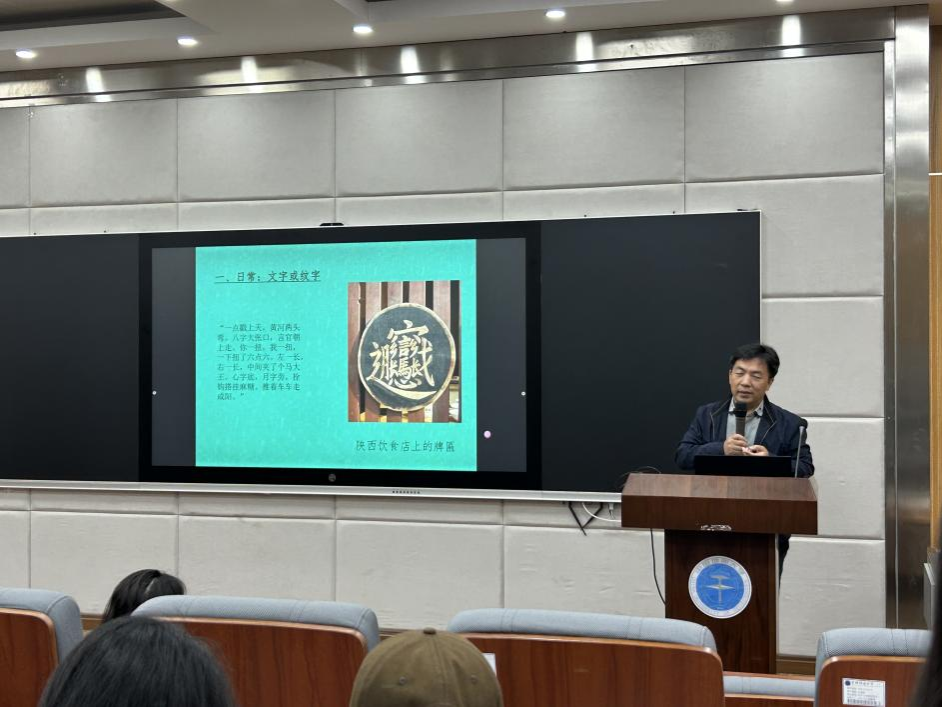On March 24, 2024, the 54th special lecture on “Studies in Iconology of Characters” was successfully held in the Lecture Hall 1104 of the Building of School of Arts and Communication. The speaker was Professor Lian Chunhai, a researcher at the Institute of Fine Arts, Chinese Academy of Arts, and the lecture was presided over by Dean He Qingjun.

The lecture was organized around the history as well as the applications of the studies in iconology and semeiology of characters. Prof. Lian first used the familiar Neolithic stork stone axe painted pottery jar and the scepter of Sanxingdui as the opening. Through examples, he explained that the patterns have rich meanings and can serve as textual records; moreover, the same symbol may also contain different meanings in different historical periods.
Using a combination of illustrations and texts, Prof. Lian explained to us in an easy-to-understand manner the relationship between Chinese characters and patterns. Chinese characters are vast and profound, which not only contain rich meanings, but are also associated with auspicious symbols, cultural memories and traces of history, and can convey traditional values like images and become important aesthetic resources.

I. Daily: characters or patterned characters
The earliest characters are inscriptions on bones or tortoise shells of the Shang Dynasty, which itself are a pattern. Therefore, in terms of the integration of the two meanings of pattern and character, the earliest Chinese character, in fact, is the concept of pattern, and the dual origins of pattern and character are actually interconnected. By combining characters, it evolves into a pattern.
Prof. Lian first cited a case that can be seen in our daily life: the plaque on a Shaanxi restaurant is a pattern made up of characters. In the historical context, the concept of multiple-component character has been applied in various aspects such as Taoist culture, heraldry, couplets, calligraphy and painting, ethnic emblem, cultural anthropology, etc. More examples of multiple-component character include hanging signs, sculptures and tiles from the Ming and Qing dynasties. Characters can be either a poem or a painting.

II. Back to icon
Character itself can serve as an icon, and the application of characters in icons can be divided into several types. Prof. Lian explained the concept of “back to icon” through three parts: characters as talismans, characters as symbols of rituals, and characters to convey memories.
Since the creation of characters by Cang Jie, the entire fate of humanity has changed. From then on, humans have begun to control their own memories. In the past, relying on the oral transmission method, the memory dissemination time was short and easy to be distorted. With the existence of characters, memory becomes more reliable and knowledge transmission becomes more convenient. So people began to expect that talismans made up of characters would keep evil spirits at bay and leave their good name in burial rituals. Characters can also establish a connection, from the initial creation of characters to its later use as a code.
Finally, Prof. Lian pointed out that human memory is a trace of history, and how to visualize characters and establish such connections for research is also a task that future scholars and students of related majors need to do.

The lecture was followed by an interactive Q&A session, in which Prof. Lian answered the students’ questions patiently. Prof. Lian Chunhai explained the relationship between patterns and characters from multiple perspectives, as well as the evolution in different cultural backgrounds of different eras. The lecture was rich in case studies and detailed in content, helping students to have a deeper understanding of characters, icons and symbols.

Text by Li Ziye
Photo by Gao Hui, Lin Ziqian, Yi Wenxuan